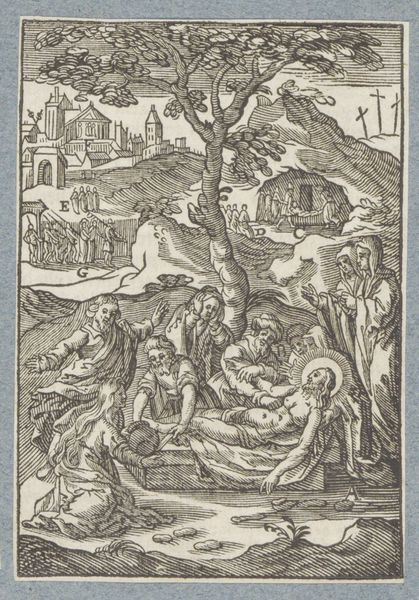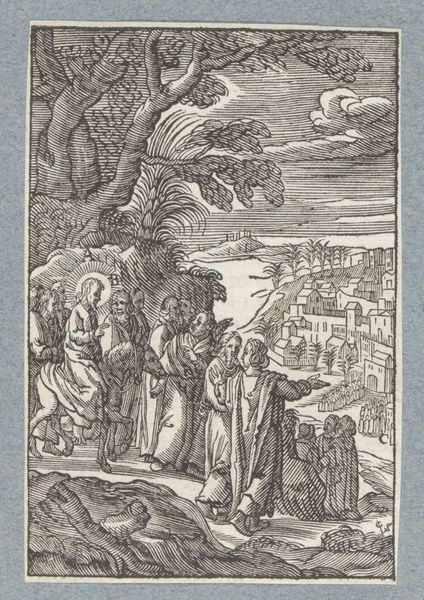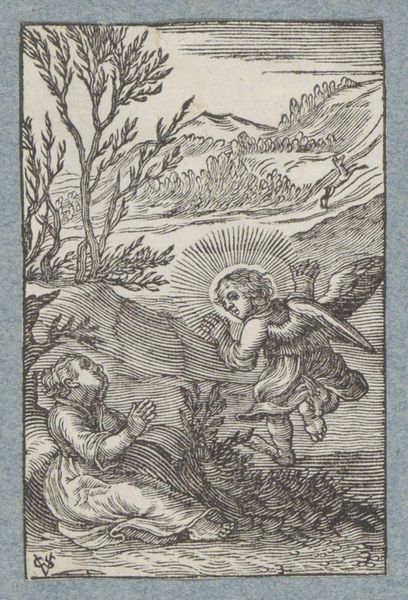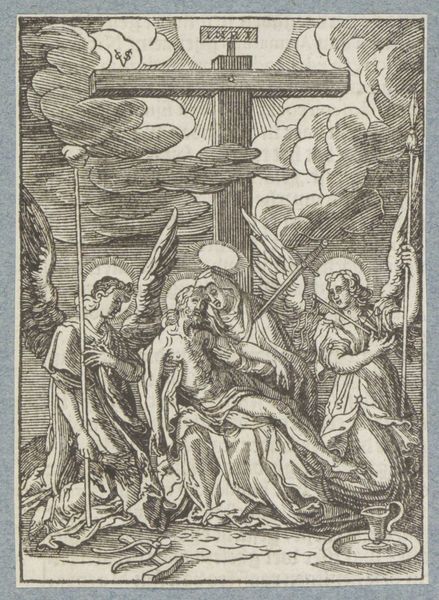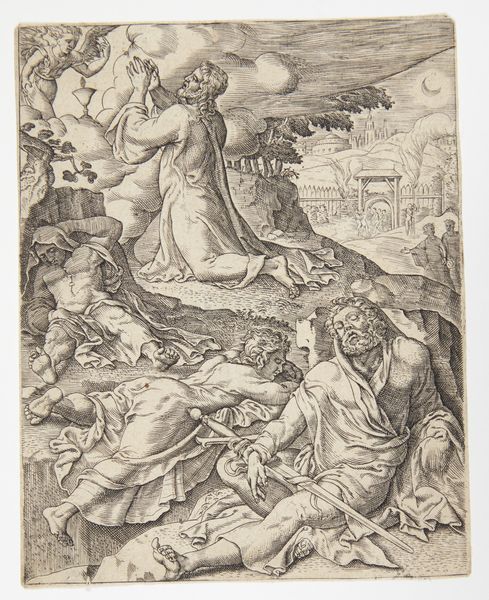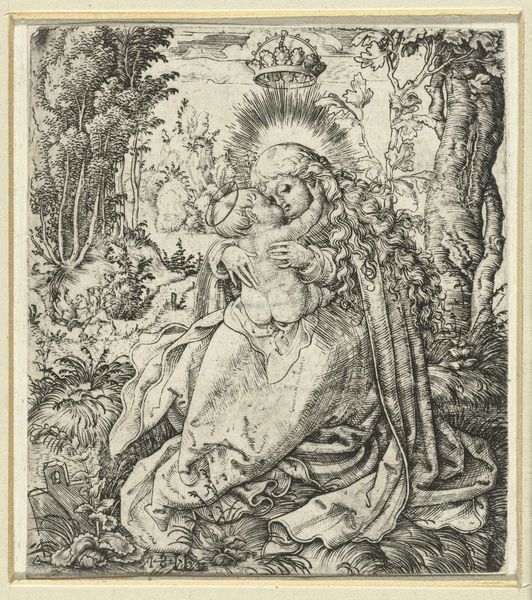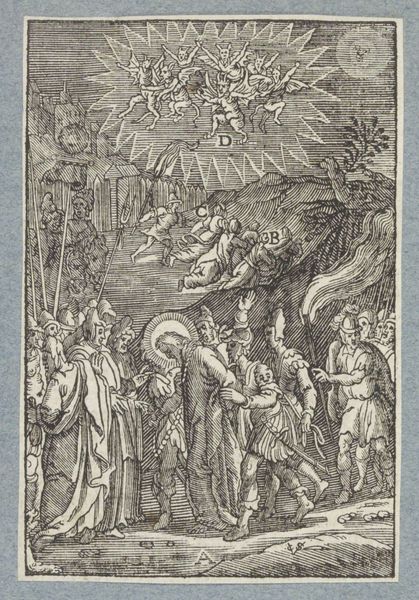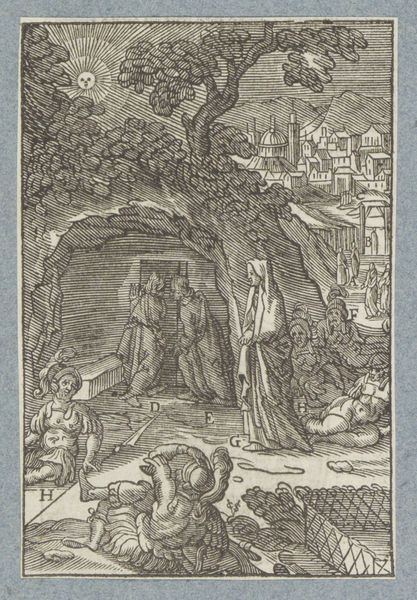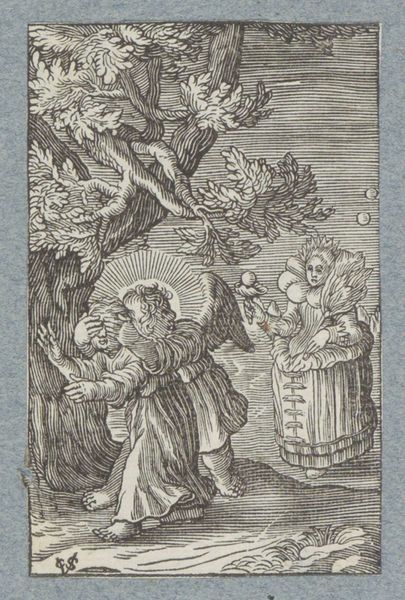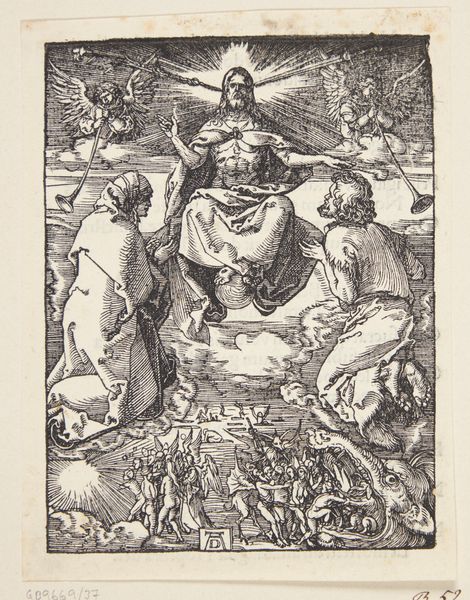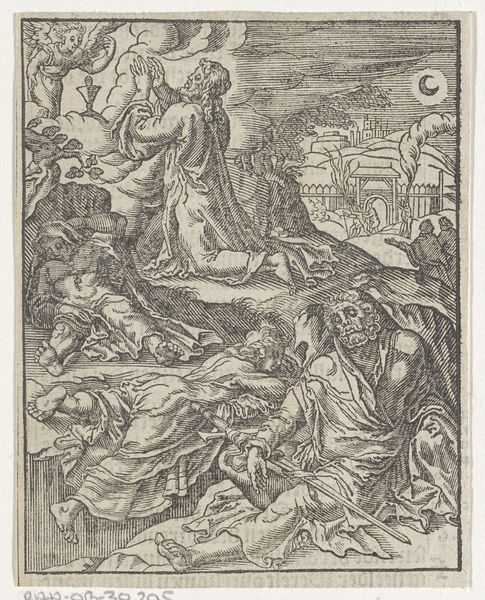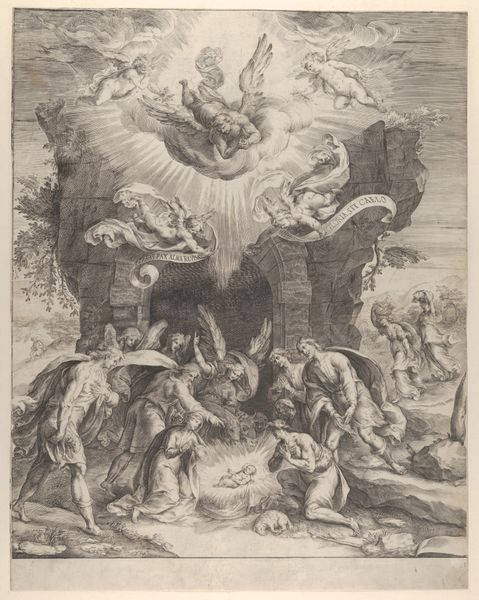
print, engraving
#
medieval
#
baroque
# print
#
pen sketch
#
landscape
#
figuration
#
line
#
history-painting
#
engraving
Dimensions: height 110 mm, width 75 mm
Copyright: Rijks Museum: Open Domain
Curator: The weight of despair is palpable at first glance, isn't it? The stark lines and sharp contrasts almost physically embody the torment. Editor: Indeed. Let's consider this engraving a bit closer. This is Christoffel van Sichem's "Christus in de hof van Getsemane," created in 1629. It's a powerful depiction of Christ's agony in the Garden of Gethsemane. Given Sichem's wider practice, I think that it's a work worth examining through the lens of printmaking during this period. The networks that prints traveled and were copied within played an enormous role in distributing motifs across Europe and popularizing specific compositions, like this one. Curator: You're right; I find myself drawn to the very method. Sichem chose engraving, a process that demands meticulous labor. It underscores the gravity of the depicted scene. Think of the artisans involved in its production, distribution, and consumption. The lines practically vibrate, lending a somber quality to the emotional tone, but that’s clearly part of his design here. Editor: I see it also as Sichem making intentional choices. The linearity isn't just a product of the medium but a stylistic one. Note how the parallel lines create shadows, defining form. It really serves to reinforce a feeling of constriction around the figures. Look closely, though. Curator: Absolutely, you're right to push us to really look closely. Those stylistic choices draw your eye directly into Christ's face in that anguished scene. How interesting that a relatively common item made from a humble and reproducible substance—ink on paper—was intended to provoke that intense emotional and devotional response. Editor: Yes. And to bring it back to material context: Consider the economic factors that may have made prints a viable medium in the 17th century. Sichem would have relied on these economies to support the making and distributing of his works, wouldn’t he? Curator: Indeed. I find the interplay between the artistic intention and the mechanical reproduction fascinating. That combination gave these images wider cultural circulation and therefore social impact. Editor: Considering all of that changes the initial impression, for me. It's not simply the despair but also how that despair becomes a shared, reproducible, even tradable emotional experience. Curator: Exactly. And in examining Sichem’s work, perhaps we, too, have created a shared, albeit less reproducible, experience.
Comments
No comments
Be the first to comment and join the conversation on the ultimate creative platform.
